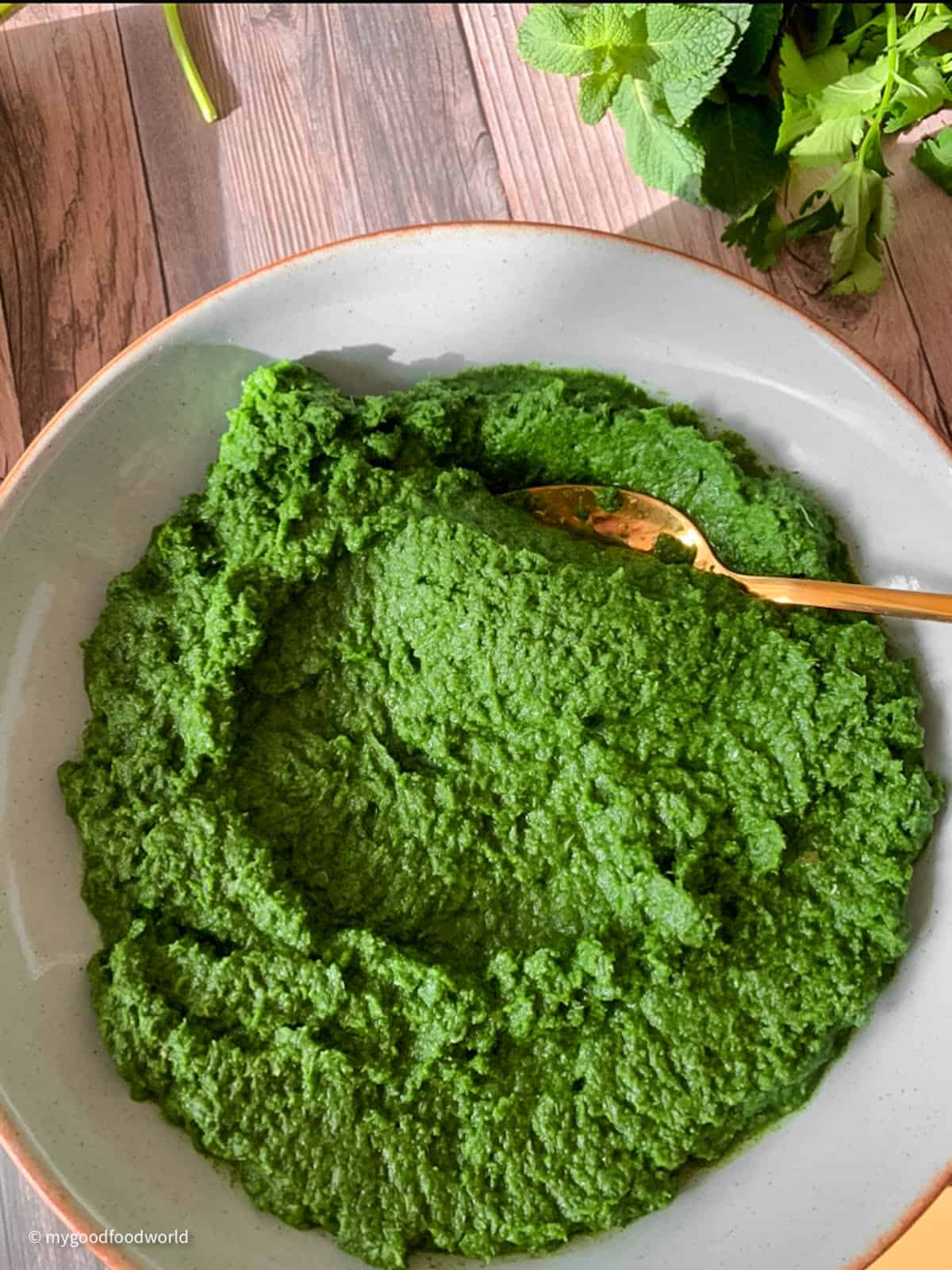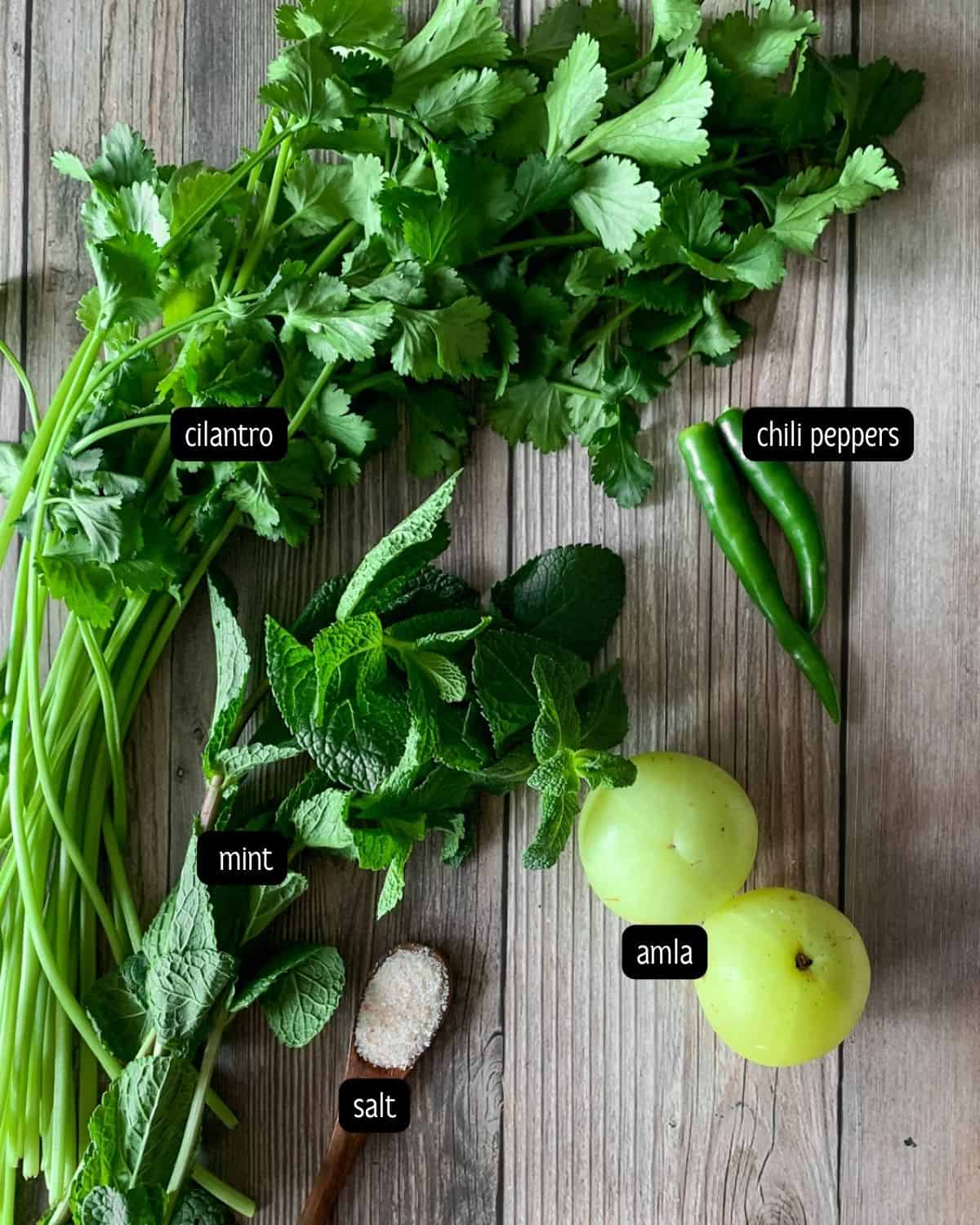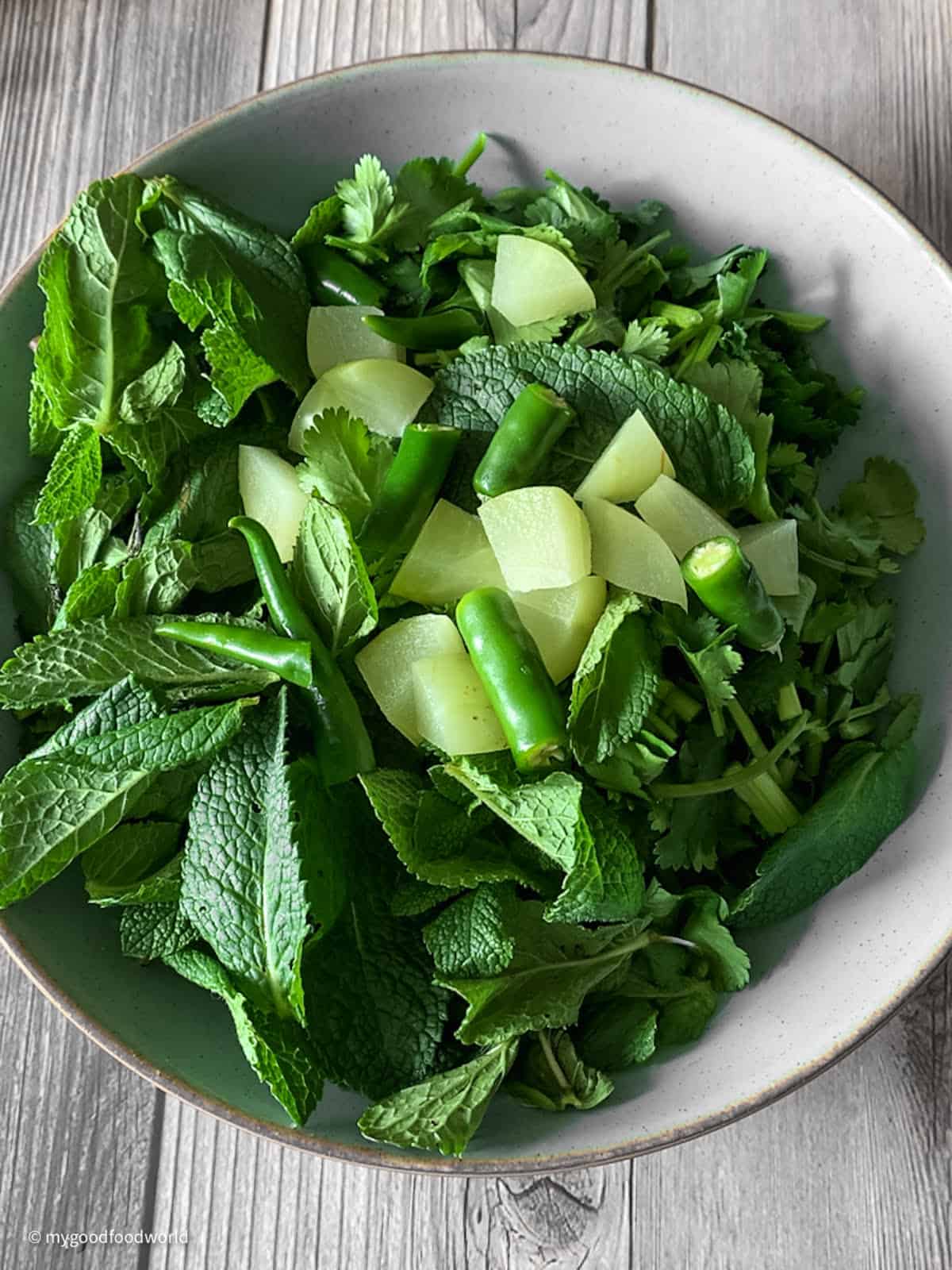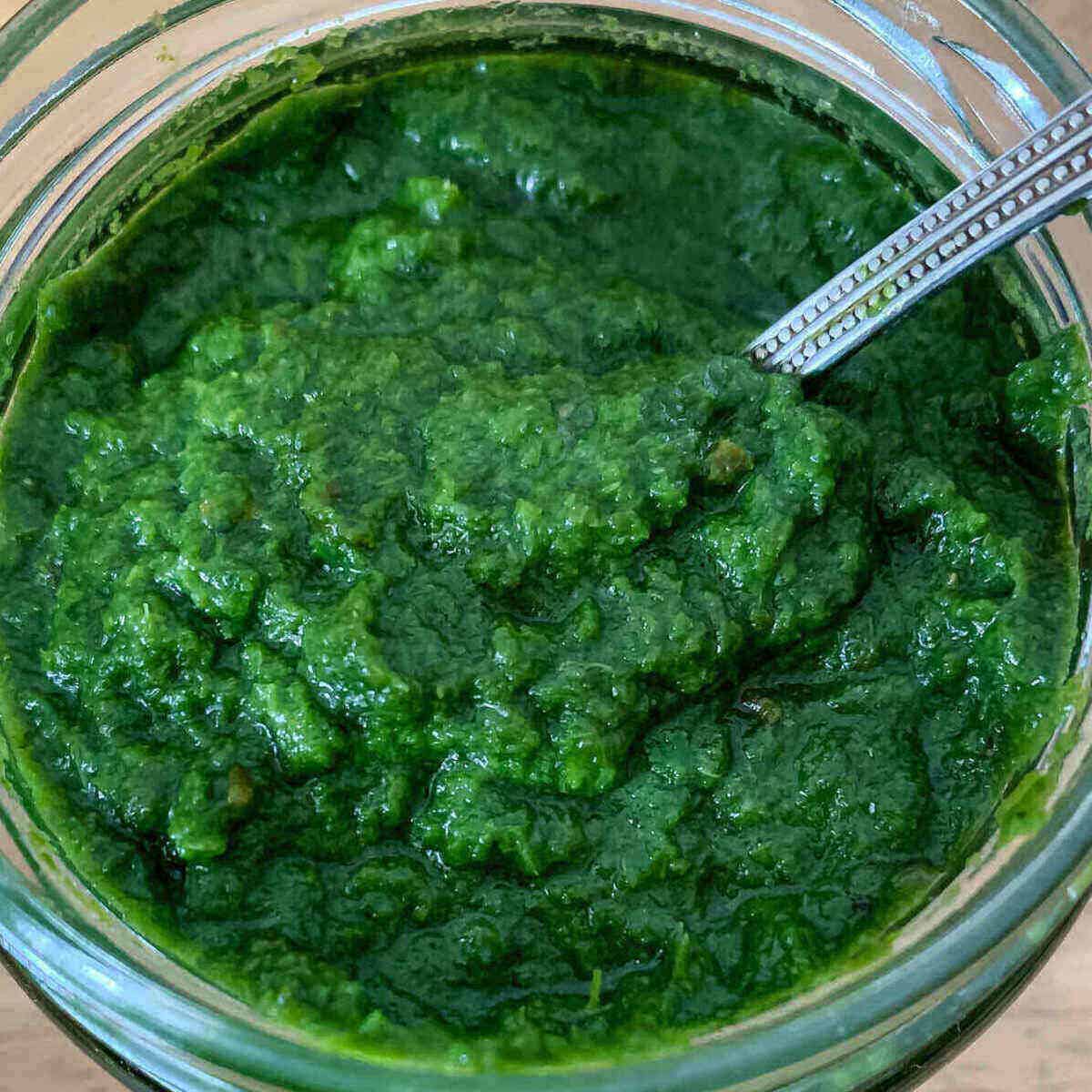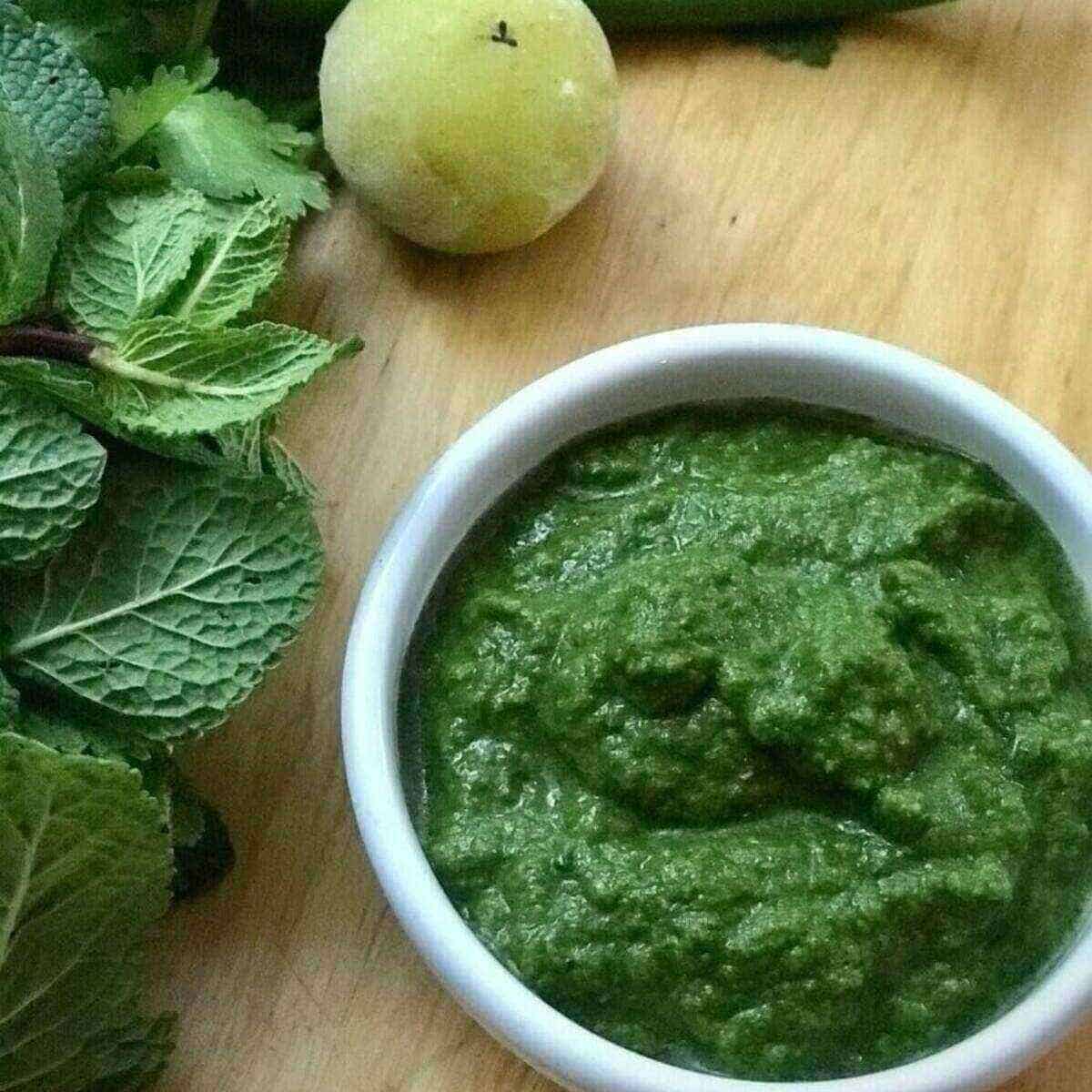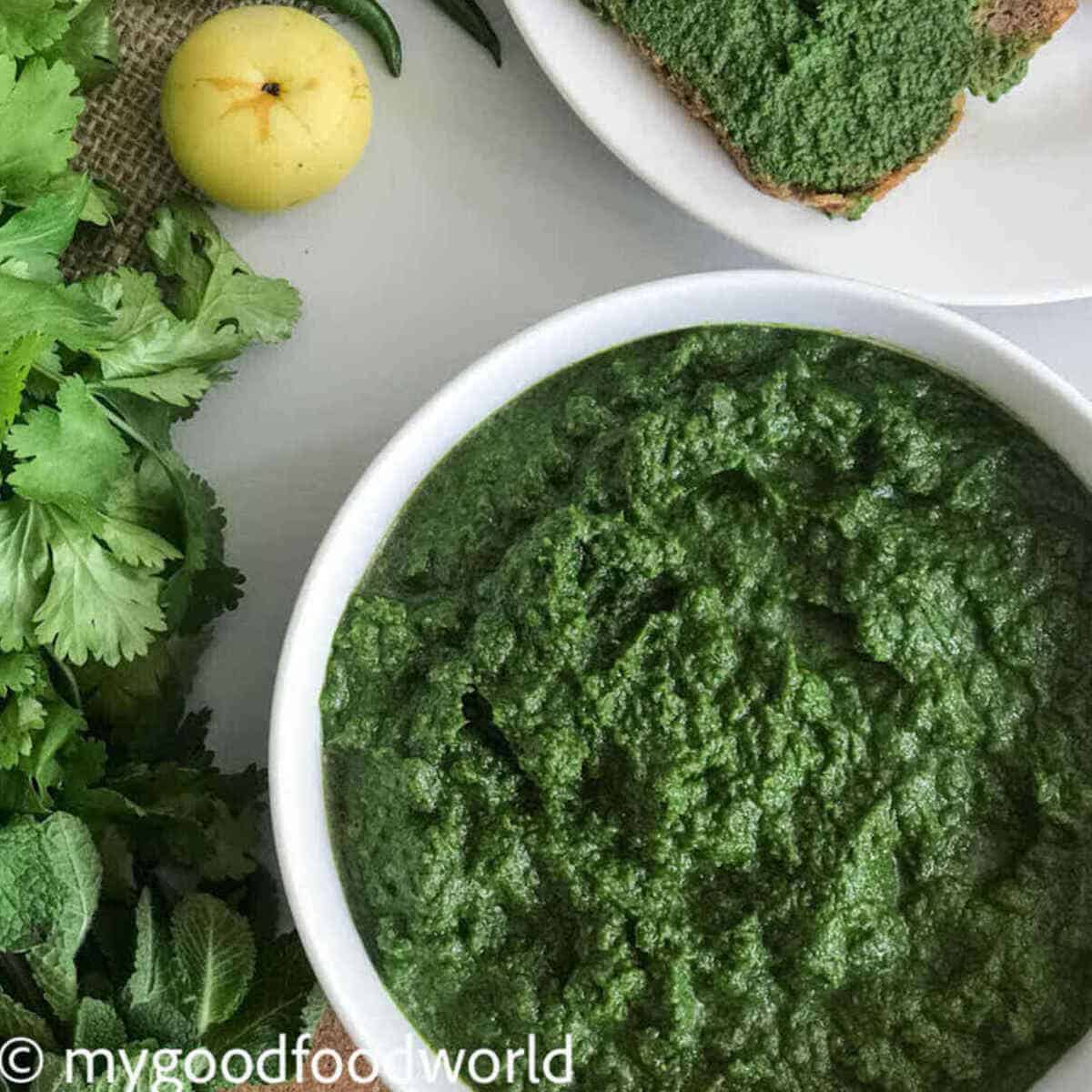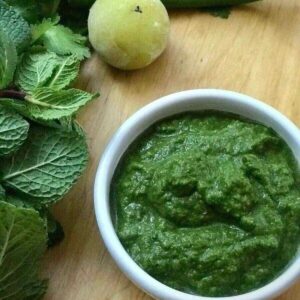As you may already know, I am a huge fan of having homemade chutneys and sauces handy. They take away the hassle from cooking and add loads of flavor to my meals. If you haven’t tried them already, this passata sauce and simple onion chutney are what I have in mind.
There is always a bunch of cilantro in my fridge, so you will invariably find a bottle of a simple green chutney lurking there 😍. Amla pudina chutney comes about on a day when I go to the Indian supermarket and purchase some mint and amla. This stunning, emerald-colored chutney can make even the simplest of meals interesting.
This recipe has no tomatoes. It has no added oil in it and is also grain-free.
Rich in vitamin C, these small berries have a bright yellow-green color and are lip-puckeringly tart! In addition to having a high concentration of vitamin C, the numerous health benefits of amla classify it as a superfruit!
According to Ayurveda, the ancient science of healing, amla is a superfood that rejuvenates the immune system, particularly the lungs.
Although amla, like most other berries, is an autumnal fruit, these days it is available throughout the year. If you can find the fresh ones, then hoorah! If not, you should be able to get frozen ones in most Indian supermarkets.
Check the recipe card for quantities.
Amla, also known as Indian gooseberry. Use fresh or frozen.
Cilantro, also known as coriander or dhaniya. I used the stems as well. They add more flavor and fiber to the chutney.
Mint, also known as pudina. I used only the leaves.
Green chilies: I used finger chilies as they are spicy. Based on your spice tolerance, use more or less chilies.
Keep 1-2 tablespoons of water handy.
If you have any questions regarding these ingredients, feel free to ask in the comments section below and I will try my best to answer them for you.
Also see the video at the end of the recipe card.
Step 1: Prepare the ingredients.
Wash the cilantro and pat dry. Chop it roughly. Use the leaves and the stems. Rinse the mint leaves and dab them dry. Do not chop them. If using fresh amla: Wash and pat it dry. Chop and discard the seed. If using frozen amla: Thaw and cut into pieces. Chop the green chillies into 2-3 pieces each.
Step 2: Make the chutney.
Place all the ingredients in a blender jar. Grind, in short bursts of 1-2 seconds, until smooth.
That’s it! The chutney is ready. I told you it is simple, right?! And that color! Beautiful 🙂
See the serving suggestions below on how to enjoy this versatile chutney.
There are, however, some things to keep in mind to ensure that the texture and color of the chutney is spot on, every time.
The ratio of cilantro to mint: Mint has a strong flavor that can dominate the taste of other ingredients. I, therefore, use it in lesser quantity. You can, if you prefer, use an equal amount of mint and cilantro. However, you’ll need to adjust the quantity of other ingredients accordingly.
Top tip: The fastest way of thawing frozen amla is to immerse it in warm water for 5 minutes. Squeeze the water out and chop.
Taste: This chutney has a well-balanced taste - the cilantro, mint, salt, and chillies come together in beautiful harmony with the tartness of amla.
Sour is an essential flavor of this chutney. If you do not have amla, feel free to use lime or lemon juice instead. Other souring agents that you can use are: dried mango powder, also known as amchur, green mango, tomato, or dried pomegranate seeds (anardana). Each of these will add its distinct flavor to the chutney.
Texture: This gooseberry and mint chutney should have a smooth and thick consistency. Avoid adding water while grinding. The salt will extract the juices and assist in grinding the chutney. If the herbs are not grinding smoothly, add 1 or 2 tablespoons of water to help.
Why does pudina chutney turn black?
This is a common problem when making any chutney using fresh herbs. Here are some scenarios in which your pudina chutney may be turning black:
Fresh herbs: Your chutney will become blackish if the herbs you are using are not fresh. Avoid using herbs that are wilting or turning paler in color. Do not chop the mint. Chopped mint quickly turns black, altering the flavor and color of the chutney. Use a high-speed blender and grind in short, 1-2 second bursts, because the heat generated by continuous high-speed grinding can turn the chutney black and bitter.
Any doubts or questions? Feel free to ask via the comments below. I will try my best to answer them for you. - Padma In India, this chutney is served as a dip for snacks such as samosa, onion bhaji, aloo tikki, and pakoras. I love having this chutney with flatbreads like this gluten-free naan. I also enjoy it as a spread on my toast and as a dip for nachos. 😋
📖 Recipe
Disclosure: The nutritional information is calculated using an online calculator and is based on available ingredients and preparation. It should not be considered a substitute for a professional nutritionists’ advice. Changing the quantities and cooking technique will alter the nutritional calculations.
